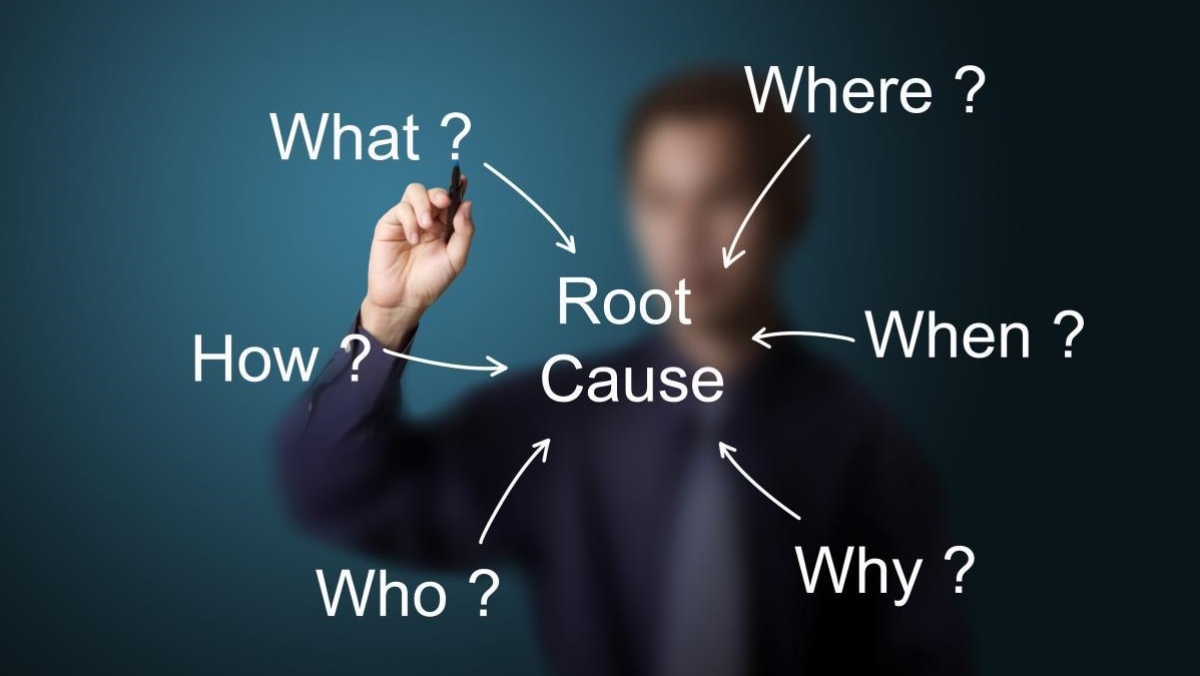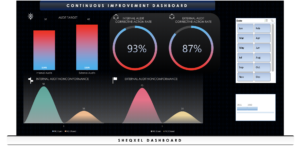
Organizations encounter problems in every day operations due to the interplay of several factors. These factors span from the immediate causal factor, the underlying causal factors to the root cause. The immediate cause is the agent of causation, the underlying causes are the contributory factors leading up to the problem and the root cause is the cause from which all other causes precede, also known as the most basic cause.
During problem solving, conducting root cause analysis is imperative in identifying and addressing the root cause rather than the immediate and underlying causes which are just signs and symptoms of the problem. Addressing signs and symptoms of a problem is like running away from a battle that you know in your heart needs to be fought another day.
Table of Contents
What is Root Cause Analysis
Root cause analysis is an effective problem-solving approach and an integral part of continuous improvement that discovers the root cause of a problem, fixes the root cause and all underlying issues, and prevents the recurrence of previous problems. Conducting a root cause analysis focuses on finding the reasons that contributed to the problem rather than merely fixing the symptoms. Since root cause analysis is a structured methodology for identifying the root problem, the benefit of using this is that it saves much time and cost as compared with solving problems without any organized approach. Furthermore, the detection of potential problems related to the current issue is also possible with this method. The most common steps to perform effective root cause analysis are discussed below.
Step 1 -Define the Problem
The first step to root cause analysis is the problem definition. Let’s take the failure of a hoisting rope of an overhead crane as an example. The following details must be determined:
- What is the problem? – The hoisting rope of an overhead crane failed.
- Who experienced the problem? – The overhead crane operator encountered the failure of the hoisting rope.
- When and where did the problem occur? – During the first shift, the hoisting rope of an overhead crane was broken when stacking sacks of raw materials in the warehouse.
Step 2 – Determine the Root Cause of the Problem.
Several tools can be used to identify causes of the problem such as 5-Why Analysis, Fishbone Diagram, and Failure Mode and Effects Analysis, to name a few. These tools systematically present all possible causes.
Now, using the 5-Why Analysis, let us determine the root cause for the failure of the hoisting rope of an overhead crane in the example above.
5-Why Analysis is one of the simplest root cause analysis methods. This involves asking “Why?” five times to uncover the underlying causes of a problem.
Why #1: Why did the hoisting rope of an overhead crane fail?
- The hoisting rope developed cracks from repetitive bending wear over time.
- The hoisting rope is not lubricated.
- Improper contact with hoist sheaves and drums caused abrasion breaks to the hoisting rope.
- The overhead crane was overloaded, thus causing tension failure.
In this example, the hoisting rope of an overhead crane failed due to overloading. Now, proceed to the second why which could be caused by several problems as well.
Why #2: Why did the overhead crane become overloaded?
- The manufacturer of the crane failed to disseminate necessary information about the load limiting system.
- The crane was inadequately designed, thus allowing load limiting systems to operate above the rated capacity.
- The warning devices failed to alarm when the load exceeded the rated capacity.
In this case, it was found that the warning devices failed to give a signal to the overhead crane operator that the overload condition was reached. Keep on asking why until the root cause is determined.
Why #3: Why did the warning device fail to alarm when the load exceeded the rated capacity?
- The load-limiting devices were not calibrated.
Why #4: Why were the load-limiting devices not calibrated?
- Inspection and functional testing of the load-limiting device and its controls were not performed.
Why #5: Why were inspection and functional testing of the limiting device and its controls not performed?
- The records of the service history of the overhead crane that trigger preventive maintenance were not updated.
Step 3 – Identify the Solutions and Implement Necessary Changes.
The solution must be focused on the permanent elimination of the problem. Furthermore, it should be planned how the necessary changes will be implemented.
In the example, practicing good documentation is the solution to the problem. Records of the actual service conditions of the overhead crane trigger the next preventive maintenance activities.
Step 4 – Evaluate the Solutions and Changes Implemented.
Ensure that the solutions and changes implemented are monitored and sustained to prevent similar problems from recurring.
Catastrophic equipment failures can be detrimental to business and are often accompanied by fatal consequences. Occurrences of these events can be prevented from happening again by implementing solutions based on the root causes determined. In most cases, people tend to provide band-aid solutions when encountering problems to be able to resume operations as soon as possible. However, using quick fixes does not address the underlying causes, keeps problems to recur, and leads to more serious damages in the future.
Utilize Turnkey Solutions to QHSE Problems
Since August 2017, SHEQXEL has been providing Quality, Health, Safety, and Environment (QHSE) management system applications and solutions at competitive prices to help QHSE practitioners meet their needs and address the lack of support for their jobs. We offer various HSE Excel Dashboard Templates that generate reports with one click and can be customized for free. With our unique high-quality pre-built templates, you become more efficient in maintaining a healthy, safe, and environmentally responsible workplace.
We, at SHEQXEL, are happy to assist you with any concerns about QHSE management system applications and solutions. Contact us!
Sel 💫 at SHEQXEL. Connect with Sel 💫 on LinkedIn

